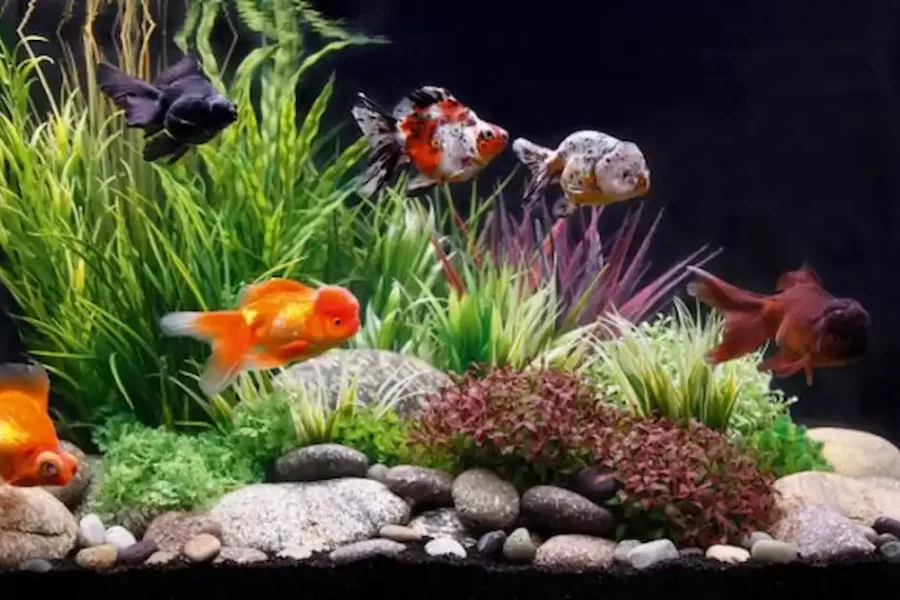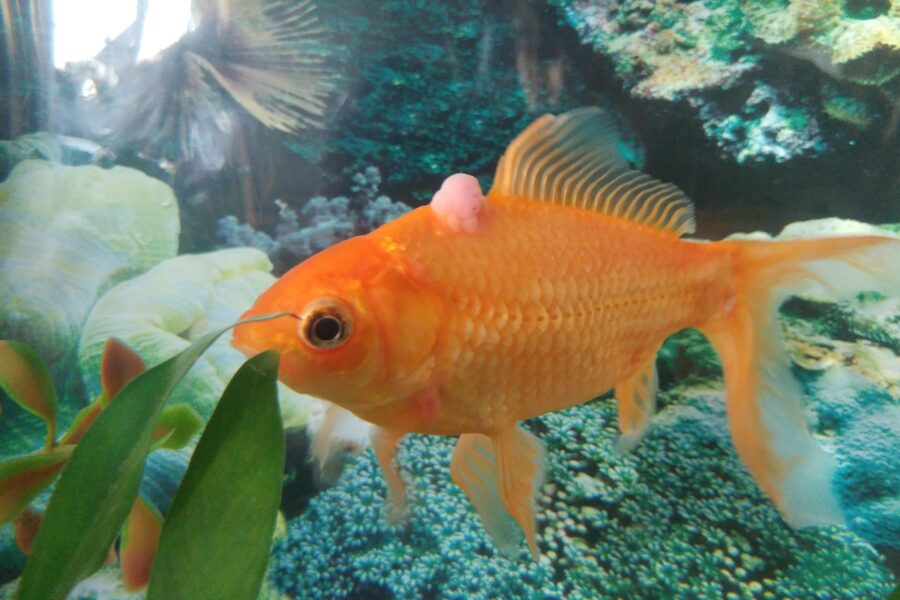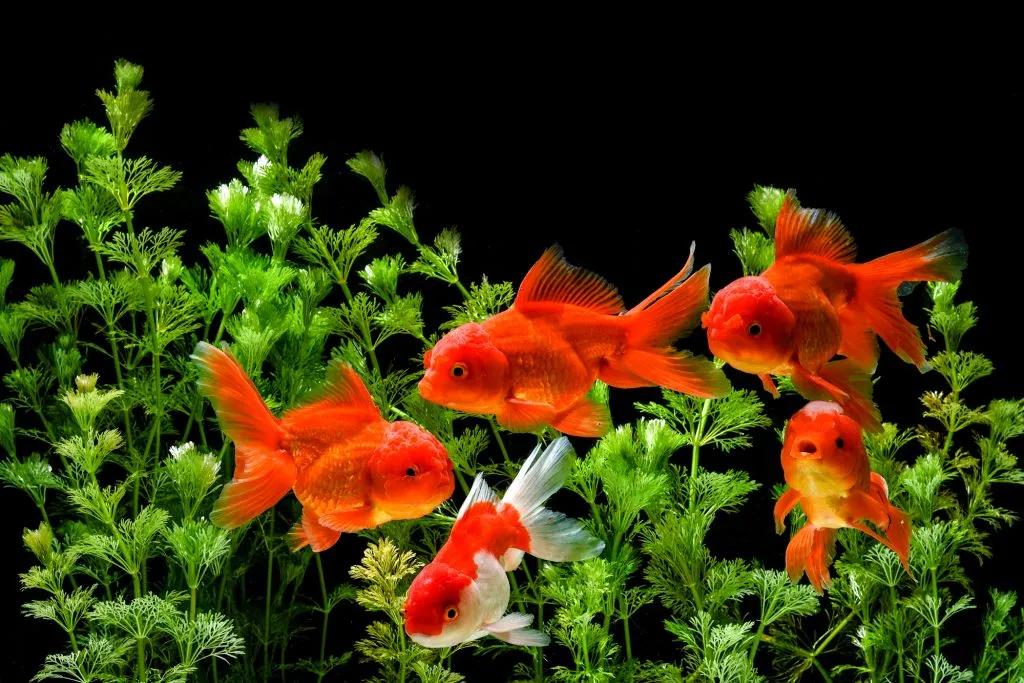
Welcome to the horror show for goldfish enthusiasts: battling the notorious parasite Chilodonella. This invisible menace infests our beloved finned pets, leaving a trail of damage in its wake. By understanding the parasite’s lifespan and survival tactics, we can fight back with targeted countermeasures.
A key ally in this war is a certified aquatic vet. They can help spot concerning symptoms and devise a foolproof treatment plan. Armed with this knowledge and support, let’s dive into the microscopic world of Chilodonella and tackle it head-on!
Identifying Chilodonella
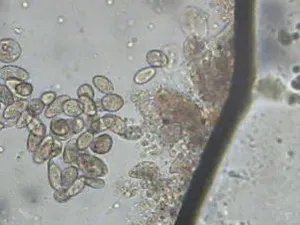
Ever sat down to admire your goldfish’s sparkling scales and found yourself staring at some unseen, mysterious party-pooper? Yes, we’re jabbing at Chilodonella here. It might be invisible to the naked eye, but its effects are certainly not!
What is Chilodonella?
Chilodonella is the microscopic baddie we’re tackling today, folks. It’s a pesky parasite that gets comfy on your goldfish, causing Chilodonella disease. Much like uninvited guests at your dinner party, except they’re feasting on your goldfish, not your lasagna!
Signs of Chilodonella in Goldfish
Remember the magic word for hangman when you were kids? Yes, OBSERVATION. Spotting Chilodonella early is crucial to save your goldfish from a nasty tango with this parasite. Clamped fins, loss of appetite, dull color, and excessive mucus are your clues. Notice your fish rubbing themselves against objects? That’s a classic hide-and-seek move against Chilodonella.
So let’s set foot into a world beneath the surface—a land of living nightmares hidden among beauty. Buckle up, because we’re diving into the grand yet ghastly effects of Chilodonella on your beloved goldfish.
Understanding the Damage Caused of Chilodonella

In Goldilocks’ tale, the bears weren’t the greatest threat; in this case, it’s Chilodonella for our golden swimmers. Diving into the topic, let’s swim through the effects this unprivileged guest has on our goldfish.
Effects on the Goldfish
Imagine having a guest at your party who spills drinks everywhere. No, not your Uncle Bob, but an uninvited guest called Chilodonella. It wreaks havoc in our goldfish’s party (read: life) by causing cloudy eyes and a grayish-blue tint on the skin. Not trendy at all, right? Even worse, our fishy friends might get sluggish and show poor appetite. Not exactly the life of the party now, is it?
Long-Term Implications of Chilodonella Infestation
Chilodonella, much like your Uncle Bob at parties, can make a short-term nuisance lead to long-term damage. On a serious note, if the infestation isn’t treated in time, the aftermath on your goldfish is grave. Prolonged exposure can lead to skin damage and, in extreme cases, death. Now, that’s one party gatecrasher we need to kick out sooner than later!
Now that we’ve ripped the mask off this party-pooper, it’s time to discuss its lifespan. This will aid us in understanding how to hit Chilodonella where it hurts the most. Hang tight, as we now venture into the survival game of this unwelcome tenant.
The Lifespan of Chilodonella

How Long Can Chilodonella Survive?
Chilodonella, like a reality TV star, will stick around for much longer than you’d probably like. In ideal conditions, this unwelcome intruder can survive in your fish tank for up to a month! That’s right, a whole month of sponging off your goldfish’s health and hospitality.
Factors That Give Chilodonella Life
When it comes to living the high life, Chilodonella is a bit of a diva. It loves lounging in polluted waters. So, dirty tanks are like five-star resorts for it. Also, it has a soft spot for cooler water temps, so if you’re giving your goldfish a chilly reception, Chilodonella will move in faster than a freeloading roomie on a cold winter night.
Now that we’ve unmasked the sly Chilodonella and spilled the tea on its extended vacation plans, it’s time to talk about how to show it the door. Don’t fret, dear reader. In the next section, we will put on our war paint and dive deep into the vital tactics you need to evict Chilodonella. So, get ready for some useful, actionable tips in the battlefield of goldfish health.
Effective Methods of Chilodonella Treatment
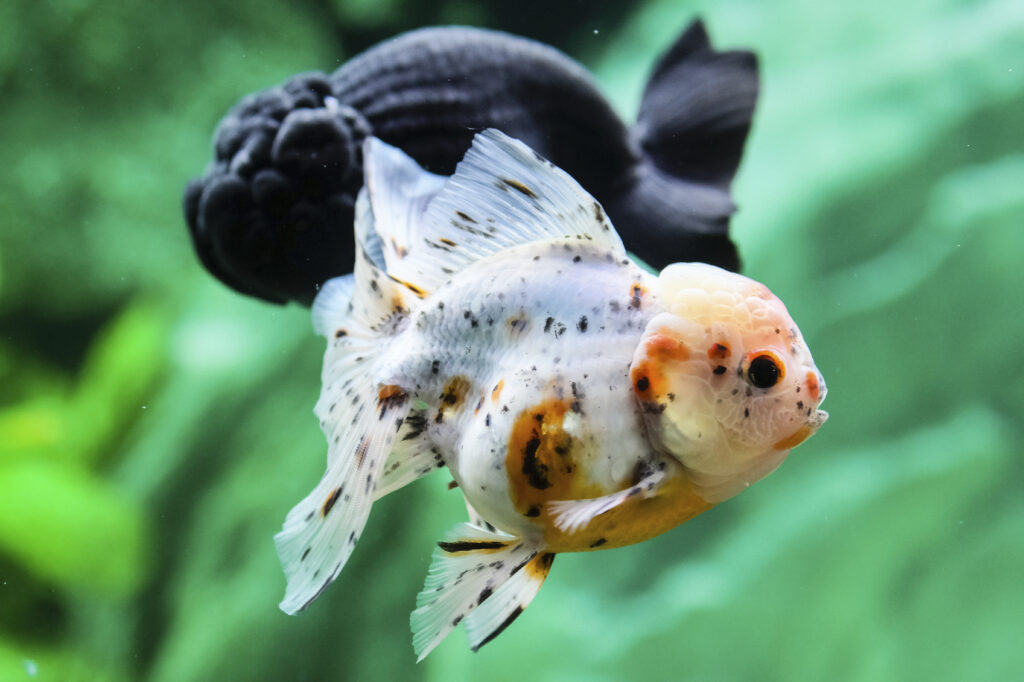
Get ready to suit up, don your invisible superhero cape, and dive into the action. Yes, you, the one with the cup of coffee, the comfy socks, and the goldfish-owning dreams. It’s time to sort out those home remedies, vet’s prescriptions, and precautions.
Home Remedies
Put that spatula down! No, we’re not cooking up some usual household remedies for that flu. Ditch that go-to DIY recipe for a bit. We instead tune into the aquatic world of your sparkly pet! Garlic, crushed and soaked in fish food, can help improve their immune system. How about adding some aquarium salt? It can work as a gentle cure, too. Just remember – everything in moderation.
Medical Treatments
Now, ever thought about playing aquatic vet for a day? If home remedies have you singing the blues, it’s time to bring out the big guns – medical treatments. But hold on, no going around popping pills in the fish tank! Here are some specific medical treatments that can be effective against Chilodonella:
- Malachite Green: This is a powerful antiparasitic medication that has proven effective against Chilodonella. It’s used to treat a variety of parasitic and fungal infections in fish.
- MICROBE-LIFT: Another effective treatment for Chilodonella, formalin is an antiparasitic and antifungal medication used in fishkeeping.
Remember, these treatments should only be administered under the guidance of a professional aquatic vet. Incorrect dosages or application could potentially harm your goldfish, so it’s important to consult with an expert before starting any medical treatment.
Preventative Measures
Now, let’s rewind and put our prevention caps on. First things first, let’s put “Clean the Goldfish’s pad” to your to-do list. Regular water changes, beneficial bacteria, and proper filtration can make your pet’s house less inviting to Chilodonella. It’s like setting up a “No Trespassing” sign.
Phew! We’ve been through a lot, right? The home remedies, the drastic medical treatments, and finally, good old prevention. I know what you’re thinking, “I signed up for a pet, not a Ph.D.” Don’t worry, it gets easier. As next, we would be diving into expert advice on prevention, and by the end, you’ll be ready to take on any aquatic predator! Just keep swimming!
Expert Tips on Prevention

Now that we’ve got a good grip on our fishy foe, let’s don our armor. Nothing beats prevention, right? Say hello to three golden rules that’ll help keep Chilodonella from crashing your goldfish’s party.
Keeping the Tank Clean
Your fish’s home is its castle, and, as you know, cleanliness is next to goldfish-ness. Go for regular water changes. Oh, and don’t forget your good ol’ friend, the siphon cleaner! That little device is as magical as a wizard’s staff in the fight against debris and waste buildup. Keeping your tank spick and span reduces the risk of Chilodonella and other parasites.
Health Monitoring of the Goldfish
Keep an eyeball on your little swimmer. Literally. Examine your goldfish daily for abnormal behavior or visible signs of distress. Are they skipping meals? Gasping for air like a marathon runner? A change in color, maybe? These symptoms could be Chilodonella’s unfriendly knock.
Proper Feeding Habits
Good grub equals good health. Overfeeding might make your goldfish as ecstatic as a kid in a candy shop. However, it leads to mucky water and unhealthy fish. Feed your goldfish a balanced diet, but remember, moderation is key!
That wraps up our expert guide on preventing Chilodonella. But what if your goldfish does catch this pesky parasite? We got you covered in our next chapter. It’s all about knowing when it’s time to say “Vet, we need you”. So, stay tuned!
Your Goldfish Health – When to Consult With a Vet
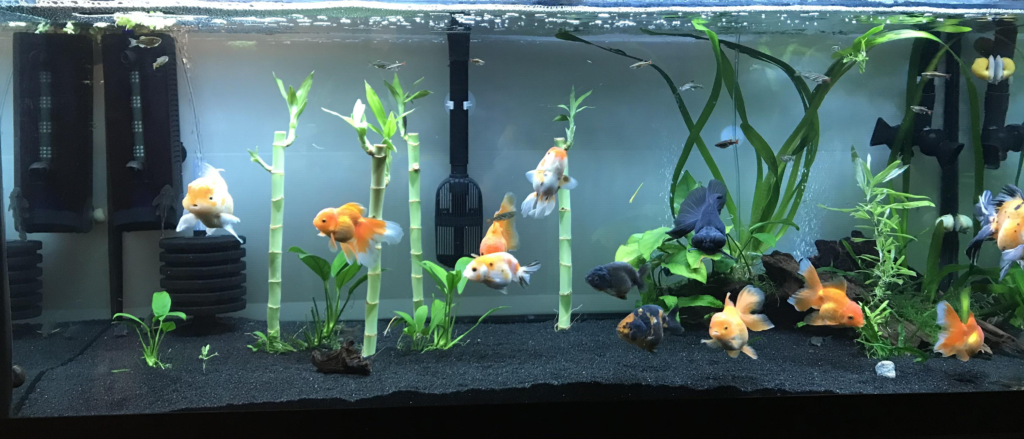
No one, especially not our amusing goldfish buddies, deserves to go through the hair-raising terrors of Chilodonella. So, let’s dive into some crucial swim lanes where we as responsible pet parents need to buckle up. We’re talking warning signs, selecting the right fish vet, and conjuring up that all-important recovery strategy.
Identifying Concerning Symptoms
Ever notice your usually animated, gold flapper seemingly heading for the Bahamas? Yeah, they’re not just avoiding your morning face. Lookout for excessive rubbing against tank furnishings, heavy breathing, and a slightly ghostly complexion. These are your prime suspects hinting something is fishy, and surprisingly not in a right way. If you witness these symptoms, don’t just shrug and stream another episode of “The Office”. It’s time to call in the professionals.
Choosing the Right Vet
Choosing the right vet can feel like finding Nemo all over again. With goldfish more complex than the usual dog and cat, a vet with aquarian expertise is what you’ll need. Look for experience, education, and yes, the much-overlooked “good-vibe” factor. After all, you don’t want your precious goldfish to be treated by someone who’s expertise expands to “knowing the difference between a dolphin and a shark”.
Developing a Treatment Plan with Your Vet
After finding your pet-friendly fish whisperer, it’s time to write the battle plan against Chilodonella. Interactive discussion is key here. Walk through all recovery steps, possible medication and, of course, sneak in some talk about preventive care for the future. Remember, the goal is not just to banish Chilodonella, but also to bask in the sunlit spectacle of your fish robustly swimming around the tank.
That’s all, folks! You’re now empowered with the need-to-know on identifying and combating Chilodonella, thus becoming the superhero your goldfish always knew you were. So, here’s to keeping our scaly sidekicks healthy, happy, and free from unseen predators!
Wrap Up
In short, Chilodonella is a nasty parasite that wreaks havoc on your goldfish. It is vital to recognize the signs early to avoid long-term damage. A clean tank, constant health monitoring, and right feeding habits are crucial in preventing its occurrence.
Should your beloved goldfish show worrying symptoms, do not hesitate to consult a vet. Choose a vet wisely and work in tandem to develop an effective treatment plan. Chilodonella may be tough, but with the right approach, it doesn’t stand a chance against you and your goldfish!
Frequently Asked Questions (FAQ)
Question: What exactly is Chilodonella?
Answer: It’s a microscopic protozoan parasite that infects goldfish, causing various symptoms such as lethargy and decreased appetite. It’s spread through direct contact with infected fish or objects.
Question: What are the signs of a Chilodonella infection in my goldfish?
Answer: Symptoms include white, film-like patches on the fish’s body, clamped fins, heavy breathing, loss of appetite, or your goldfish shaking or rubbing its body against objects in the tank.
Question: What is the lifespan of Chilodonella?
Answer: Out of a host (like your goldfish), Chilodonella can survive between two to five days. In fish, it can flourish and cause damage for weeks if not treated.
Question: Can I treat Chilodonella at home, or do I need a vet?
Answer: You can initially try steps like increasing tank temperature and using specialized commercial treatments. However, if symptoms persist, you should consult a vet for professional advice.
Question: How can I prevent my goldfish from getting Chilodonella?
Answer: Regularly cleaning the tank, monitoring your goldfish’s health, and maintaining appropriate feeding practices can go a long way in preventing Chilodonella and other diseases.
Question: When should I see a vet for my goldfish?
Answer: If your goldfish’s symptoms are not improving after initial home treatments or if the condition worsens, it’s time to seek the expertise of a vet.

